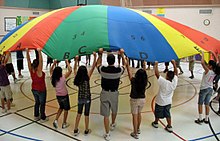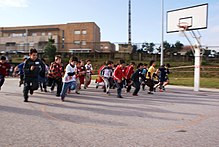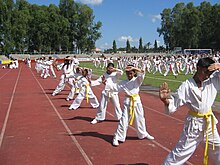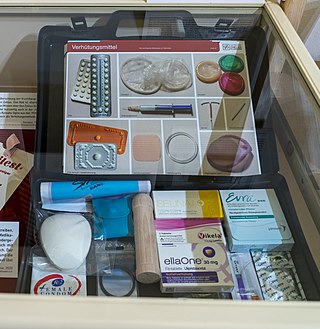
Sex education, also known as sexual education, sexualityeducation or sex ed, is the instruction of issues relating to human sexuality, including human sexual anatomy, sexual activity, sexual reproduction, safe sex, and birth control, sexual health, reproductive health, emotional relations and responsibilities, age of consent, and reproductive rights. Sex education that includes all of these issues is known as comprehensive sexuality education, and, especially in more socially conservative countries and parts of the United States, is often opposed to abstinence-only sex education, which only focuses on sexual abstinence. Sex education may be provided as part of school programs, public health campaigns, or by parents or caregivers. In some countries it is known as "Relationships and Sexual Health Education".
Science education is the teaching and learning of science to school children, college students, or adults within the general public. The field of science education includes work in science content, science process, some social science, and some teaching pedagogy. The standards for science education provide expectations for the development of understanding for students through the entire course of their K-12 education and beyond. The traditional subjects included in the standards are physical, life, earth, space, and human sciences.
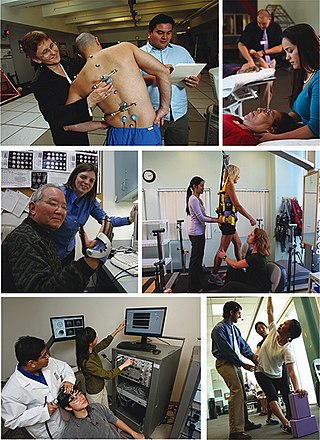
Kinesiology is the scientific study of human body movement. Kinesiology addresses physiological, anatomical, biomechanical, pathological, neuropsychological principles and mechanisms of movement. Applications of kinesiology to human health include biomechanics and orthopedics; strength and conditioning; sport psychology; motor control; skill acquisition and motor learning; methods of rehabilitation, such as physical and occupational therapy; and sport and exercise physiology. Studies of human and animal motion include measures from motion tracking systems, electrophysiology of muscle and brain activity, various methods for monitoring physiological function, and other behavioral and cognitive research techniques.

Recess is a general term for a period in which a group of people are temporarily dismissed from their duties.
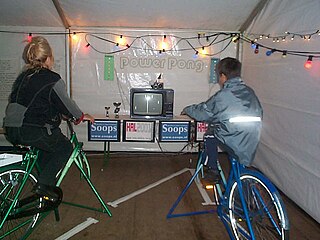
Fitness game, exergame, and gamercise are terms used for video games that are also a form of exercise. Fitness games rely on technology that tracks body movement or reaction. The genre has been used to challenge the stereotype of gaming as a sedentary activity, and promoting an active lifestyle among gamers. Fitness games are seen as evolving from technology aimed at making exercise more fun.

Health education is a profession of educating people about health. Areas within this profession encompass environmental health, physical health, social health, emotional health, intellectual health, and spiritual health, as well as sexual and reproductive health education.
Physical fitness is maintained by a range of physical activities. Physical activity is defined by the World Health Organization as "any bodily movement produced by skeletal muscles that requires energy expenditure." Human factors and social influences are important in starting and maintaining such activities. Social environments can influence motivation and persistence, through pressures towards social conformity.
Adapted physical education is the art and science of developing, implementing, and monitoring a carefully designed physical education. Instructional program for a learner with a disability, based on a comprehensive assessment, to give the learner the skills necessary for a lifetime of rich leisure, recreation, and sport experiences to enhance physical fitness and wellness. Principles and Methods of Adapted Physical Education and Recreation. Adapted physical education generally refers to school-based programs for students ages 3–21yrs.
Comprehensive Sexuality Education (CSE) is a sex education instruction method based on a curriculum that aims to give students the holistic knowledge, attitudes, skills, and values to make healthy and informed choices in their sexual lives. The intention is that this understanding will help students understand their body and reproductive processes, engage in safer sex by reduce incidents of contracting sexually transmitted infections (STIs) such as HIV and HPV, reduce unplanned and unwanted pregnancies, as well as lowering rates of domestic and sexual violence.
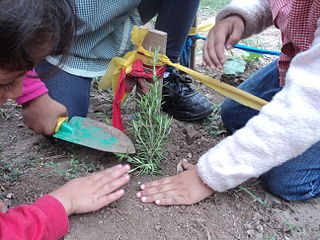
Garden-based learning (GBL) encompasses programs, activities and projects in which the garden is the foundation for integrated learning, in and across disciplines, through active, engaging, real-world experiences that have personal meaning for children, youth, adults and communities in an informal outside learning setting. Garden-based learning is an instructional strategy that utilizes the garden as a teaching tool.

A gym, short for gymnasium, is an indoor venue for exercise and sports. The word is derived from the ancient Greek term "gymnasion". They are commonly found in athletic and fitness centres, and as activity and learning spaces in educational institutions. "Gym" is also the commonly used name for a "fitness centre" or health club, which is often an area for indoor recreation. A "gym" may include or describe adjacent open air areas as well. In Western countries, "gyms" often describe places with indoor or outdoor courts for basketball, hockey, tennis, boxing or wrestling, and with equipment and machines used for physical development training, or to do exercises. In many European countries, Gymnasium also can describe a secondary school that prepares students for higher education at a university, with or without the presence of athletic courts, fields, or equipment.
HealthCorps is an American nonprofit organization that provides school-based and organizational health education and peer mentoring, in addition to community outreach to underserved populations.

Lack of physical education is the inadequacy of the provision and effectiveness of exercise and physical activity within modern education.

Girls on the Run, a national non-profit organization, designs programming that strengthens third- to eighth grade girls’ social, emotional, physical and behavioral skills to successfully navigate life experiences. The program’s intentional curriculum places an emphasis on developing competence, confidence, connection, character, caring, and contribution in young girls through lessons that incorporate running and other physical activities. The life skills curriculum is delivered by caring and competent coaches who are trained to teach lessons as intended.

Physical literacy is the ability to move with competence and confidence in a wide variety of physical activities in multiple environments that benefit the healthy development of the whole person.
Workplace health promotion is the combined efforts of employers, employees, and society to improve the mental and physical health and well-being of people at work. The term workplace health promotion denotes a comprehensive analysis and design of human and organizational work levels with the strategic aim of developing and improving health resources in an enterprise. The World Health Organization has prioritized the workplace as a setting for health promotion because of the large potential audience and influence on all spheres of a person's life. The Luxembourg Declaration provides that health and well-being of employees at work can be achieved through a combination of:

Fitness culture is a sociocultural phenomenon surrounding exercise and physical fitness. It is usually associated with gym culture, as doing physical exercises in locations such as gyms, wellness centres and health clubs is a popular activity. An international survey found that more than 27% of world total adult population attends fitness centres, and that 61% of regular exercisers are currently doing "gym-type" activities. Getting and maintaining physical fitness has been shown to benefit individuals' inner and outer health. Fitness culture has become highly promoted through modern technology and from the rising popularity of social media platforms.
A System for Observing Play and Recreation in Communities (SOPARC) is a reliable and valid observation tool for assessing park and recreation areas, including park users’ physical activity levels, gender, age, and ethnicity groupings. It also collects information on park characteristics including accessibility, usability, supervision, and organization. The use of SOPARC in park monitoring would allow for more consistent and comprehensive monitoring of parks. The summary data (e.g. the number of park users, demographics, frequency by activity types) obtained using SOPARC is easily understood by practitioners, policymakers, and the public. SOPARC has been adapted to numerous studies to understand the role of park conditions on park use, compare park data, and inform park system planning and programming.
Gender inequality in curriculum exposes indications that female and male learners are not treated equally in various types of curriculum. There are two types of curricula: formal and informal. Formal curricula are introduced by a government or an educational institution. Moreover, they are defined as sets of objectives, content, resources and assessment. Informal curricula, also defined as hidden or unofficial, refer to attitudes, values, beliefs, assumptions, behaviours and undeclared agendas underlying the learning process. These are formulated by individuals, families, societies, religions, cultures and traditions.
The Presidential Fitness Test was a national physical fitness testing program conducted in United States public middle and high schools from the late 1950s until 2013, when it was replaced with the Presidential Youth Fitness Program.

